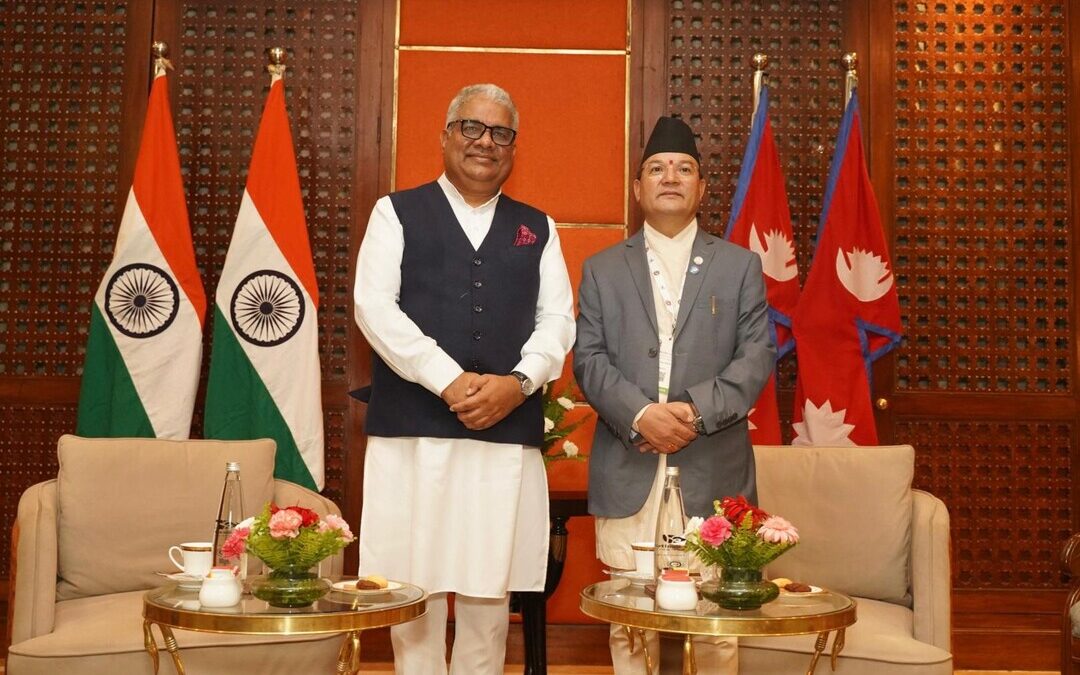India Pushes Five-Point Climate Plan to Safeguard Mountain Regions
India’s environment minister unveils five-point climate action plan to protect Himalayan ecosystems at Nepal’s global summit.
Environment Minister Bhupender Yadav on Friday issued a five-point global action plan to safeguard fragile mountain ecosystems, urging Himalayan nations to unite in conservation efforts during the inaugural session of the Sagarmatha Sambaad climate summit in Kathmandu.
Speaking at the high-level global dialogue themed “Climate Change, Mountains, and the Future of Humanity”, Yadav underlined the growing vulnerability of mountain regions and called for enhanced transboundary cooperation under initiatives such as the International Big Cats Alliance.
“It is a profound honour to represent India at this historic gathering,” Yadav said, invoking the summit’s namesake — Sagarmatha, the Nepali name for Mount Everest — as a symbol of the shared responsibility to protect mountain environments. “These ecosystems form the lifeblood of our planet,” he added.
Disproportionate Climate Impact on South Asia
Highlighting the Himalayas’ ecological and cultural significance, Yadav noted the region’s rich biodiversity and the disproportionate impact of climate change on developing nations.
He said South Asia accounts for just 4 percent of historical global carbon dioxide emissions despite housing nearly a quarter of the world’s population.
The minister criticized developed countries for failing to meet their climate finance and technology transfer commitments, arguing that mountain nations require predictable and adequate support to implement adaptation and mitigation strategies.
Five-Point Call for Global Action
Yadav outlined a “Five-Point Call for Global Action,” which includes:
- Enhanced Scientific Cooperation – Strengthening research and monitoring of cryospheric changes, hydrology, and biodiversity.
- Building Climate Resilience – Investing in adaptation measures and early warning systems for climate-related disasters such as glacial lake outburst floods.
- Empowering Mountain Communities – Centering policies on the welfare and traditional knowledge of local communities.
- Providing Green Finance – Ensuring access to climate finance in line with the UNFCCC and the Paris Agreement.
- Recognizing Mountain Perspectives – Incorporating mountain ecosystems into global climate and sustainable development discussions.
Spotlight on Snow Leopard Conservation
Yadav also referenced India’s conservation efforts, including Project Snow Leopard and the country’s first comprehensive population assessment of the elusive predator.
Between 2019 and 2023, 718 snow leopards were identified across India, he said, representing 10–15 percent of the global population.
Calling for deeper collaboration through the International Big Cats Alliance, Yadav said Himalayan nations must work together to protect iconic species such as tigers, leopards, and snow leopards.
“India stands ready to partner with Nepal and all mountain nations to protect our shared ecological heritage,” he said. “In the spirit of Vasudhaiva Kutumbakam — the world is one family — we must ensure our sacred mountains remain beacons of sustainability.”
Regional and global leaders attended the summit, including Nepali Prime Minister KP Sharma Oli, Foreign Minister Arzu Rana Deuba, China’s National People’s Congress Vice Chairman Xiao Jie, and Azerbaijan’s Ecology Minister and COP29 President Mukhtar Babayev.
Nirmal Menon
Related posts
Subscribe
Error: Contact form not found.


